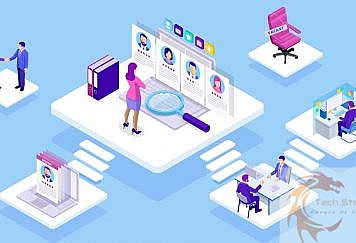Consumer rigidity, or a commitment to follow the same patterns when choosing products or services, has been the subject of a lot of market research:
- Some companies are interested in keeping loyal customers for as long as possible.
- Others entering a highly competitive market, on the contrary, are wondering how to lure consumers in favor of their business.
One of the most complete models of customer commitment, derived from numerous empirical studies, includes five dimensions.
5 Keys for Explaining Customer Commitment
Affective Dimension
Affective commitment occurs when a buyer has some positive feelings and emotions associated with the consumption of a certain product. For example, he most often selects cookies that his parents bought him as a child or visits a bar where he met friends in his youth. The specificity of this type of determinant of consumer behavior is that it tends to be passed on to new generations.
Normative Dimension
Normative commitment is associated with a person’s value system. Having some beliefs, he is inclined to pick the product or service that best matches his value preferences.
- For example, if a consumer is determined to use environmentally friendly building materials, he will use the services of a company that focuses on eco production.
- On the contrary, if he believes that the use of e.g., wood in construction leads to the destruction of forests, by virtue of his convictions, he will look for alternatives.
With such a directly opposite choice, it is precisely value beliefs that will be its determinants.
Economic Dimension
This type of obligation is more related to rational calculation. If the client is offered any economic incentives, for example, discounts, bonuses, or loyalty programs, his rationality tells him that by continuing to buy, for example, medicines in a particular pharmacy network or goods in a supermarket, he will be able to save a lot with a large volume shopping.
Forced Commitment
This type of relationship with the supplier of goods or services arises when a comparable alternative is either absent on the market at all or is not within the reach of the consumer. For example, a girl in her youth was engaged in figure skating and wanted to visit the skating rink on weekends as an adult. The only public ice rink in the city does not suit her due to the low level of service, but there are simply no alternatives.
Habitual Commitments
Very often consumer behavior arises due to the persistence of repetitive practices. They become so automatic that the consumer simply does not think about alternatives. As a rule, in order to knock him out of this habitual behavior, too strong a stimulus is needed. For example, it could be the emergence of an affective attachment to some other product, place, or service.
How the Knowledge of the Reasons for Consumer Commitment Can Be Used?
By understanding the operation of the mechanism for choosing goods, services, and suppliers, marketers can influence their target audience:
- Strengthen the normative component by emphasizing values shared by the company. For example, a cosmetics company may stress that its products are not tested on animals.
- Make the purchase of goods in particular stores rationally profitable due to a well-thought-out system of discounts and bonuses. It should be such that no matter what bonuses the consumer has already received, there must be some kind of bar ahead that he can overcome if he buys more.
- Emotionally engage consumers by linking their products or services to some significant dates. For example, a restaurant that made a discount for a wedding or high school prom will get it back many times over when they start visiting it regularly to relive the event in their memory.
Knowledge of the determinants of customer commitment leads to understanding what people require. The consumer needs a consistent picture of the world, carrying positive emotions and supported by a rational awareness of economic benefits. These are the main postulates of the model.
Follow TechStrange for more Technology, Business, and Digital Marketing News.





